Yoga
DIE VEDEN & AYURVEDA, EIN ÜBERBLICK
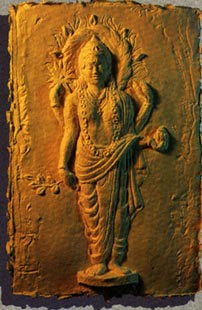
> CHARAKA SCHOOL OF AYURVEDA <
> AYURVEDA & CHARAKA SAMHITA <
>> Books from „Kenneth G. Zysk“ <<
Ayurveda (DevanÄ�garÄ�: आयुर्वेद, the ’science of life‘) is a system of traditional medicine native to India and practiced in other parts of the world as a form of alternative medicine. In Sanskrit, the word Ayurveda consists of the words Ä�yus, meaning ‚life‘, and veda, meaning ‚related to knowledge‘ or ’science‘. Evolving throughout its history, Ayurveda remains an influential system of medicine in South Asia. The earliest literature of Ayurveda appeared during the Vedic period in India. The Sushruta Samhita and the Charaka Samhita were influential works on traditional medicine during this era. Ayurvedic practitioners also identified a number of medicinal preparations and surgical procedures for curing various ailments and diseases. Ayurveda traces its origins to the Vedas—the Atharvaveda in particular—and is connected to Hindu religion.The Sushruta Samhita of Sushruta appeared during the 1st millennium BC.
Ayurveda, Rishis, die 4 VEDEN (Rgveda, Samaveda, Yajurveda, Arthavaveda) und deren Entstehung:
Der Begriff Ä�yurveda ist ein Wort aus dem Sanskrit, der altindischen Hochsprache, und heißt einfach übersetzt „Wissenschaft vom Leben“ oder „Wissen von der Lebensspanne“. Durch diese Bezeichnung versteht sich, dass im Ä�yurveda nicht nur Krankheiten behandelt werden. Als „Wissenschaft vom Leben“ hat Ä�yurveda ein zweifaches Ziel.
> Dein Ayurveda Net ….. “ Ayurveda “ <
> Meet Pentavox Herbals, Ayurveda (Biggest Ayurveda Group on fb) <
> Meet many Ayurveda Groups and Friends at facebook <
> Meet Dhanvanthari Groups and Friends at facebook <
> Meet NaturalNews.com at facebook <
NaturalNews.com is an independent news resource that covers the natural health and wellness topics that empower individuals to make positive changes in their personal health. NaturalNews offers uncensored news that allows for healthier choice.
IYENGAR – BELLUR SCHOOL TRUST (BKSSNT)

> The Tree of Yoga by B.K.S. Ivengar <
> Bellur Krishnamachar Sundararaja Iyengar <
Bellur Krishnamachar Sundararaja Iyengar (Kannada: ಬೆಳ್ಳೂರ್ ಕೃಷ್ಣಮಾಚಾರ್ ಸುಂದರರಾಜ ಐಯಂಗಾರ್, Tamil: பெல்லூர் கிருஷ்ணமாச்சார் சௌந்தரராஜா ஐயங்கார்), (generally known as Yogacharya B. K. S. Iyengar) (Born December 14, 1918 in Bellur, Kolar District, Karnataka, India) is the founder of Iyengar Yoga. He is considered one of the foremost yoga teachers in the world and has been practicing and teaching yoga for more than 75 years. He has written many books on yogic practice and philosophy, and is best known for his books Light on Yoga, Light on Pranayama, and Light on the Yoga Sutras of Patanjali. He has also written several definitive yoga texts. Iyengar yoga centers are located throughout the world, and it is believed that millions of students practice Iyengar Yoga. He was awarded the Padma Shri in 1991, and the Padma Bhushan in 2002. In 2004, Iyengar was named one of the 100 most influential people in the world by Time Magazine.
The Bellur Krishnamachar and Seshamma Smaraka Niddhi Trust (BKSSNT) or the Bellur Trust is a charitable Trust formed by Guruji, his family and students, with the objective of undertaking educational, social, cultural and health related projects for the upliftment of the people of Bellur, a poor and backward village in southern India where Guruji, BKS Iyengar was born and lived as a young boy.
Guruji’s vision for Bellur is to establish the village as a model through the provision of educational, medical, social and cultural facilities and opportunities to raise and enhance the general quality of life and improve future prospects for the young in the community.
It is hoped from this firm foundation that lasting social and economic reform can be achieved. Guruji’s father had been a school teacher and taught at a school in a nearby village as there was no school in Bellur until Guruji in 1967 built a primary school with the help from money raised by English students.
In the past several years a further level has been added to the existing primary school providing a large space for yoga classes A 50,000 gallon water tank has been erected to provide fresh clean drinking water to the village A fully staffed, equipped High School (Smt. Ramamani Sundararaja Iyengar High School) has been built with the villagers sending their children to enroll at 8th grade School fees for the students have been waived and a system of free education established for those who come from under privileged homes.
-
School uniforms have been provided free to all students as well as books and stationery
-
A kitchen has been established to provide a free mid day meal
-
The necessary infrastructure of boundary fences, power supply and road access has been established
-
A Day Hospital providing for the health of the villagers has been built, equipped and staffed
-
A Guest House to provide accommodation for visitors to Bellur.
-
Restoration and building of the world’s first Sage Patanjali temple (pdf).
The future plans are as ambitious as those already completed and will need ongoing support from the Iyengar community and a very large amount of funding to see their completion and maintenance. The benefits to the village of Bellur have been enormous and the future plans will benefit the whole locality around Bellur.
Guruji has asked his students world wide to launch fund raising initiatives to help raise the significant amounts of money to further the already successful projects which the Trust has embarked upon. You can donate individually or you can organize a group project. For further information about the Trust and its work and to download the donation form go to www.bksiyengar.com .
Download: The World’s First Sage Patanjali temple > (pdf) <.
JNANA YOGA
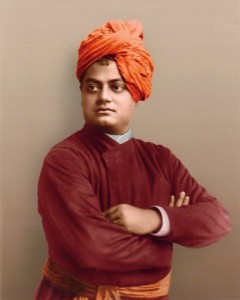
> COMPLETE WORK SRI RAMAKRISHNA, VIVEKANANDA <
> The Complete Works of Swami Vivekananda/Jnana-Yoga <
Swami Vivekananda (Bengali: স্বামী বিবেকানন্দ, Shami BibekÄ�nondo; Hindi: स्वामी विवेकानन्द, SvÄ�mi VivekÄ�nanda) (January 12, 1863–July 4, 1902), born Narendranath Dutta is the chief disciple of the 19th century mystic Sri Ramakrishna Paramahamsa and the founder of Ramakrishna Mission. He is considered a key figure in the introduction of Vedanta and Yoga in Europe and America and is also credited with raising interfaith awareness, bringing Hinduism to the status of a world religion during the end of the 19th century. Vivekananda is considered to be a major force in the revival of Hinduism in modern India. He is best known for his inspiring speech beginning with „sisters and brothers of America“, through which he introduced Hinduism at the Parliament of the World’s Religions at Chicago in 1893.
Swami Vivekananda was born in an aristocratic Kayastha family of Calcutta in 1863. His parents influenced the Swami’s thinking – the father by his rational mind and the mother by her religious temperament. From his childhood, he showed inclination towards spirituality and God realization. While searching for a man who could directly demonstrate the reality of God, he came to Ramakrishna and became his disciple. As a guru, Ramakrishna taught him Advaita Vedanta and that all religions are true, and service to man was the most effective worship of God. After the death of his Guru, Vivekananda became a wandering monk, touring the Indian subcontinent and getting a first-hand account of India’s condition. He later sailed to Chicago and represented India as a delegate in the 1893 Parliament of World Religions. An eloquent speaker, Vivekananda was invited to several forums in United States and spoke at universities and clubs. He conducted several public and private lectures, disseminating Vedanta, Yoga and Hinduism in America, England and a few other countries in Europe. He also established Vedanta societies in America and England. He later sailed back to India and in 1897 he founded the Ramakrishna Math and Ramakrishna Mission, a philanthropic and spiritual organization. Swami Vivekananda is regarded as one of India’s foremost nation-builders. His teachings influenced the thinking of other national leaders and philosophers, like Mahatma Gandhi, Jawaharlal Nehru, Subhas Chandra Bose, Aurobindo Ghosh, Sarvepalli Radhakrishnan, and Rabindranath Tagore.
THE PATH OF KNOWLEDGE –
Jnana Yoga according to Bhagavad Gita:
The aim of this article is to introduce the concepts of Jnana Yoga or the path of knowledge/wisdom in the light of the Bhagavad Gita…I will introduce only a few verses from the Gita to emphasize the approach to Jnana marga…at the same time, we will see practical methods for Jnana Yoga….The Gita is eminently a practice manual too.!
Introduction
The Hindu approach to spiritual evolution leading to liberation or moksha or Self-realization is one of the four major paths or yogas:
-
the path of knowledge or Jnana yoga,
-
the path of mind control or Raja Yoga ,
-
the path of devotion of Bhakti yoga and
-
the path of action/work or Karma yoga.
This is the common mode of classification, mostly derived from Swami Vivekanada’s lectures. Other yogas are minor variations of these four .
Of these, Bhakti Yoga and Karma Yoga have been given less importance in former times. The path of Knowledge, with focus on Hindu philosophy, has been in the forefront since the Vedic times…Some advaitins [non-dualists] would maintain that Karma yoga and Bhakti Yoga are preparatory steps or stepping stones [to purify the mind, chitta shuddi] and final liberation is possible only due to acquisition of Jnana or by Jnana Yoga as the final entry gate….[This was the stand taken by Shri Adi Sankara in Vivekachudamani too.]
The Jnana yoga is intellectually satisfying with abstract reasoning and can be devoid of rituals and formal worship of idols and symbols ;it is non-sectarian and asserts that the indwelling Soul or Atman and Self is the same in all.All these appeal to those who have a dislike for formal worship with rituals.[Yet devotion to Guru is essential in the Hindu context.]
Be that as it may, there are many saints and sages who would maintain that Bhakti yoga alone or Karma plus Bhakti is enough for final emancipation! I do not wish to dwell on this here because I have discussed this in greater detail in one of my books. [Refer: the Essence of the Bhagavad Gita…Pustak Mahal, New Delhi]
The significance of Jnana Marga
Among the four paths or yogas, Jnana marga is considered as the ‘direct’ path . If you consider the spiritual effort as that of climbing a mountain and reaching the summit, Jnana is like rock climbing without detours and winding roads.
Bhakti yoga can be likened to a sloping ,winding road leading to the summit and Raja yoga is like taking steep steps over rough stones. Thus Raja yoga is more difficult than Bhakti and Jnana is the most difficult of all.
Jnana yoga is admittedly difficult and certainly is meant for ‘dhiras’ –accomplished intellectuals with tremendous power of concentration for deep meditations on the abstract Self or Atman or Brahman. It is like rock climbing , with lot of training from expert mountain climbers and those with good physique…not for weaklings!…snd thode with ascetic bent of mind..
Therefore over the ages, there have been very few real jnanis .We are thrilled by the lives of great Jnanis or sages like Bhagawan Ramana or Sadashiva Brahmendra, Thayumanavar or Nisargadatta….again how many disciples they had who reached those heights?..may be a few again.
Bhagawan Ramana Maharshi stated that Jnana and the path of Self-enquiry or atma-vichara are really easy to encourage novices; , but among those who tread this path, many have fallen on the wayside many times. When you climb a rock face, a single mistake will result in crash to the bottom.!
I am not counting here excellent philosophers who may expound on the philosophy or nonduality [Advaita] and give lectures/satsanghs, but only those who have had deep experience of the Self; or reached Samadhi states.
It is safe to say that the path of Knowledge or Jnana is pretty difficult for this materialistic age, when ascetic methods are not even understood or appreciated, in the highly commercial atmosphere we live in.
What Jnana Yoga entails?
Swami Vivekananda had beautifully explained this path in his lectures, compiled into the book— ‘Jnana Yoga’ , published by Advaita Ashrama/RK mission/Vedanta societies.. I do not wish to elaborate on these, but point out a few things.
Jnana path entails two things: Viveka or discrimination and Vairagya or dispassion.
Viveka means distinguishing between unreal things [the phenomenal world, world of change ] and the Real, that is permanent [Self/Atman/Brahman].To get Viveka one may require intellectual analysis, cogitation, reflection and discussion….Satsangha would help ,but would not be always sufficient.
Vairagya or dispassion is to difficult to achieve…this is nonattachment to things of this world…little by little at first—the practice of sacrifice and renunciation….monkhood with severing of ties, with family ,society ,abandoning one’s property and possessions…Bhagwan Buddha [Sakyamuni], St Francis and Bhagwan Ramana are rare examples….Many jnanis may attain this stage in slow degrees too…
It is alright to talk of being in the world ,not of the world’ in a rhetorical sense, but not easy to practice…many so called Jnanis that I have come across still maintain contact with their kith and kin and friends , maintain personal bank accounts, own property—thereby making a mockery of real renunciation or sannyas in Indian /Hindu framework.
There are instances of great Jnanis making the break suddenly in a moment of intense vairagya or renunciation;they serve as beacon-lights for others and exemplify this path.
Let me add that in the Hindu context, only those who exhibit intense Vairagya would be respected in the Hindu society and acknowledged as real Jnanis, not those who profess enlightened state or give wonderful lectures or self-styled gurus.
A Jnani ,by definition ,has attained a state of equanimity or samatva;he looks upon pain and pleasure, friends and foes, glory and ignominy ,heat and cold, in the same light, without any feeling whatsoever. In other words, he does not exhibit attachment [ragha] or aversion [dvesha] against any one or any particular thing.
The message of the Bhagavad Gita.
Now let us turn to a few verses from the Gita.
The verses are most beautifully told in chapters 2,3,4,& 5.
-
That calm man who is the same in pain and pleasure ,whom these cannot disturb, alone is able to attain to immortality—O Arjuna. [2-15]
-
The Unreal never is. The real never is not.Men possessed of the knowledge of the Truth fully know both of these. [2-16]
-
This verse is the distilled essence of non-duality or advaita.
-
That by which all this is pervaded—that know for certain to be indestructible. None has the power to destroy this Immutable.[Self/Atman] [2-17]
-
Being steadfast in Yoga, perform actions , abandoning attachment, remaining unconcerned as regards success and failure. This even-minded is known as Yoga..[2-48]
-
Endued with this evenness of mind, one frees oneself in this life, alike from vice and virtue; devote thyself, to this yoga….Yoga is the very dexterity of work. (skill in action) [2-50]
-
Attachment [ragha] and aversion [dvesha] of the senses for their respective objects [of the senses] are natural; let none come under the sway; they are his foes. [3-34]
-
As fire is enveloped by smoke, as a mirror by dust, as an embryo by the womb, so is It covered by that [desires]. [3-38]
-
That man who lives devoid of longing, abandoning all desires, without the sense of “I” and “Mine” , he attains to peace. [2-71]
-
Mahatma Gandhi attached great importance to chapter 2 and chapter 3 of the Gita and also the latter portion of Ch 2 –verses 58-72 on the man of steady wisdom.
-
Whose actions are all devoid of plan [sankalpa] and desire for results, and whose actions are burnt by the fire of knowledge, him, the sages call wise. [4-19]
-
Verily there exists nothing in this world as purifying like knowledge. In good time, having reached perfection in yoga, one realizes that [knowledge]oneself in one’s own heart.. [4-38]
-
The place which is reached by the Jnanis is also reached by the karma yogis .He who understands knowledge and performance of actions as the same alone sees.(understands).
-
To those whose ignorance is destroyed by the knowledge of the Self—that knowledge of theirs, like the Sun, reveals the Supreme. [5-16]
-
Those who have their intellect absorbed in That, whose self is That, whose steadfastness is That, whose consummation is That, their impurities [sins] cleansed by knowledge, they go whence to non-return. [Moksha] [5-17]
-
With the heart unattached to external objects, he realizes the joy that is in the Self. With the heart devoted to the meditation of Brahman, he attains unending happiness.[5-21]
A careful study of these verses will clarify many things relating to Jnana Yoga.
> Meet Swami Vivekananda, Vedanta Groups & Fans at facebook <
> Meet Ramakrishna Groups at facebook <
RABINDRANATH TAGORE & AMARTYA SEN.
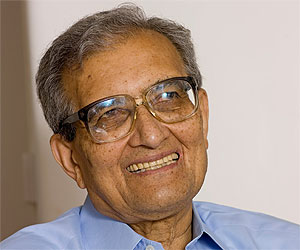
> AMARTYA SEN. & VISVA-BHARATI UNIVERSITY <
A central university and an institution of national importance
Rabindranath Tagore (Bengali: রবীন্দ্রনাথ ঠাকুর) (May 1861 – 7 August 1941), sobriquet Gurudev, was a Bengali polymath. As a poet, novelist, musician, and playwright, he reshaped Bengali literature and music in the late 19th and early 20th centuries. As author of Gitanjali and its „profoundly sensitive, fresh and beautiful verse“, he became Asia’s first Nobel laureate by winning the 1913 Nobel Prize in Literature.
A Pirali Brahmin from Calcutta, Tagore wrote poems at age eight. At age sixteen, he published his first substantial poetry under the pseudonym Bhanushingho („Sun Lion“) and wrote his first short stories and dramas in 1877. Tagore denounced the British Raj and supported the Indian Independence Movement. His efforts endure in his vast canon and in the institution he founded, Visva-Bharati University.
THE ARTS OF HARISH JOHARI
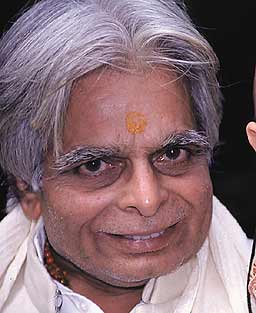
> HARISH´s AYURVEDA BOOKS & ARTS <
Harish Johari (1934-1999) was a distinguished North Indian author, Tantric scholar, poet,musician, composer, artist, and gemologist who held degrees in philosophy and literature and made it his life’s work to introduce the culture of his homeland to the West.
Breath, Mind, and Consciousness
YOGA, by the puplisher
Modern scientists are just now beginning to understand what yogis have known for centuries–that the life force animating our physical bodies is regulated by breath, and that the breath energy is controlled by the mind. The esoteric and practical science of Swar Yoga >–presented in this book for the first time in English–< teaches conscious observation and control of breathing patterns to maximize energy and vitality.
Tantric Scholar and author of Tools for Tantra, Chakras, and The Healing Power of Gemstones, HARISH JOHARI brings an in-depth knowledge of ancient Hindu sciences to this discussion of breath and the yoga of balanced living.
His is the first guidebook for Westerners to offer a comprehensive treatment of the subject, providing information from Sanskrit texts otherwise unavailable in the English Language. He explains the sensory network of the nose and its effect on the subtle channels of energy throughout the body, showing the direct link between the practice of conscious breathing and the electrochemical balance of the brain and nervous system. He also shows how the breath, alternating between left and right nostrils, is influenced by solar and lunar forces and how one can attune to these natural rhythms and universal laws for greater health and well-being.
SWARA YOGA, the ancient art of breathing
Johari’s mastery of > Swara Yoga < techniques is apparent in the broad scope of Breath, Mind and Consciousness: included are a discussion of the phases of the five elements in the breathing cycle, exercises for physical and psychic healing, the means for determining which nostril is active, and instructions for conceiving a son or a daughter.
While continuing his lifetime study and practice of tantra, HARISH JOHARI is a painter, sculptor, gemologist, and composer of Indian music.
The word SWARA in Sanskrit, means sound or musical note; it also means the continuous flow of air through one nostril. And we all know that YOGA means union. So Swara Yoga is the science which is about the realization of cosmic consciousness, through the awareness or observation, then control or manipulation of the flow of breath in the nostrils.
Swara yoga is an ancient tantric science which involves the systematic study of the breath flow through the nostrils (or swara) in relation to the prevailing phases of the moon, time of day and direction . Although we think of ‚pranayama‘ when we think of techniques associated with the breath, in Swara yoga, it is the association of the breath in relation to the activities or phases or positions of the sun, moon, planets, seasons, time of day, with the physical and mental conditions of the individual and then taking the appropriate action according to these subtle relations. For example, knowing the moon phases and checking the flow of your nostrils before you get out of bed in the morning and letting the corresponding foot be the first to touch the floor and make the first step, is a simple practice that ensures success in everything that happens for that day. The first foot to touch the ground will get the prevailing ’successful‘ flow of energy from the cosmos.
> Meet SWARA Group at facebook <
> Meet over 200 Frida Kahlo Groups and Frida Kahlo Fans (184.298) <
YOGA TANTRA IN BUDDHIST SYSTEMS
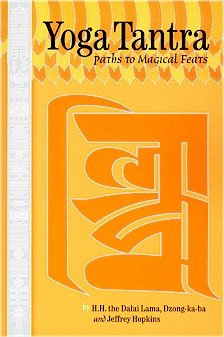
> Buddhaguhya< > Tantric Buddhism <
> INTRODUCTION TO THE BUDDHIST TANTRIC SYSTEMS <
–from Yoga Tantra: Paths to Magical Feats by H.H. the Dalai Lama, Dzong-ka-ba and Jeffrey Hopkins, translated and edited by Jeffrey Hopkins, published by Snow Lion Publications
Buddhaguhya’s Introduction to the Meaning of the Tantra and its commentary by the master Padmavajra describe how to achieve many different types of feats in considerable detail. These include achieving clairvoyance, love, compassion, the altruistic intention to become enlightened, and so forth. In Yoga Tantra there is also the achievement of an actual body that is a special type of form having the marks of a Buddha’s body; this seems to be like the mental body achieved through the path of the Perfection Vehicle. The process is to generate yourself as the deity and then imagine that all of space is filled with similar small Buddha bodies, which are brightened with the exhalation of breath and drawn into your heart with the inhalation of breath, like butter melting into sand.
By contemplating this again and again, capacity is gradually achieved, whereby eventually your body turns into a Bodhisattva Knowledge-Mantra Bearer who has a similitude of the form of a Buddha.
Paths to Magical Feats
by H.H. the Dalai Lama,
Dzong-ka-ba and Jeffrey Hopkins,
translated and edited by Jeffrey Hopkins
Contact Us:
Snow Lion Publications
N. America: (800) 950-0313
Worldwide: (607) 273-8519
By Mail: PO Box 6483,
Ithaca, NY 14851 USA
By Email: tibet@snowlionpub.com
On the Web: www.snowlionpub.com
ABOUT SOUND AND FORM
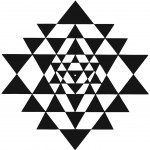
> YOGA UND MEDITATION IM ZENTRUM <
> SWAMI JANAKANANDA´s PROGRAMM<
Klang und Form:
In der Yogatradition gibt es bestimmte Mantra (Klänge zur Meditation) und Yantra (Formen um darauf zu meditieren), die zusammen gehören. Man sagt, daß die Form von Sri Yantra zum Mantra OM gehört, und umgekehrt.
Lassen sich diese Zusammenhänge zwischen Klang und Form beweisen? Ist das etwas, das man nur im Geiste erlebt oder läßt es sich messen?
Der Schweizer > Dr. Hans Jenny < verbrachte sein Leben mit der Untersuchung von den Zusammenhängen zwischen Klang und Form > (siehe Vibrationen schaffen Formen) . <
Er war einer der führenden Forscher der Welt auf diesem Gebiet und der Begründer der Kymatikwissenschaft. An seinem Forschungsinstitut für Wellenphänomene in der Schweiz konstruierte er um das Jahr 1970 ein sogenanntes Tonoskop, einen Apparat, mit dem sich Klang in Form umsetzen läßt. Dr. Jenny hat verschiedene Bücher über Kymatik geschrieben und fotografiert/gefilmt, wie Klänge verschiedene Materiale beeinflußen.
Nach unseren Quellen, ließ man eine Person, die > „ OM „< korrekt aussprechen konnte, das Mantra in das Mikrofon des Tonoskops singen. Zunächst bildeten sich Kreise auf der Platte, dann entstanden verschiedene Dreiecke mitten im Kreis, und als „M“ ausklang waren die Konturen von Sri Yantra zu sehen.
> CYMATICS, Nada Brahma, the World is Sound <
> CYMATICA Architectural Thesis Investigation <
About Sound and Form:
In the Yoga Tradition there are certain mantras (sound syllables) and yantras (forms to meditate on) which belong together. The form which belongs to the mantra Om is said to be Sri Yantra, and vice versa.
Is this relationship between form and sound a purely subjective experience – one that certain people claim to have seen within? Or can it be measured?
Dr. Hans Jenny spent his life investigating the connection between > sounds and forms < . He was one of the world’s foremost researchers in the field and the founder of the science of Cymatics. In his Wave Phenomena Research Institute in Switzerland, around 1970, he constructed what is called a tonoscope – an apparatus which converts sounds into forms. He wrote several books on Cymatics and documented through films and photos the influence of sounds on various materials.
According to our sources, a person who could pronounce the mantra „Om“ correctly, was asked to sing it into the tonoscope’s microphone. At first a circle was generated on the membrane of the tonoscope, then various triangles formed themselves inside the circle, and when the „m“ faded out, > Sri Yantra < was completed. Another mantra created concentric circles.
BINDU Textbeiträge von Yoga und Meditation im Zentrum,
Skandinavische Yoga und Meditationsschule
in Hannover und im Harbergen Yoga Retreat
www.yogaimzentrum.de
YANTRAS – VEDIC SACRED GEOMETRY
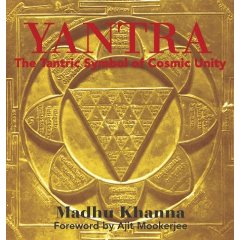
> YANTRA – the Tantric Symbol of Cosmic Unity <
> YANTRA & YOGA < > WATER FOR LIFE <
> International Water for Life Foundation <
Educating and raising the awareness of the power of water.
„Yantras are beautiful art, the original Vedic sacred geometry. These cosmic diagrams generate nourishing, life-supporting energies. Yantras embody the energy of particular sacred archetypal energies, such as deities and planets or grahas of > Vedic astrology (Jyotish) < . Yantras are especially useful in buildings that were not Vastu-designed. They protect from negative, disruptive energies in the environment. The directions, elements, and planets exert powerful vibratory effects on our bodies, minds, and emotions. Yantras help us have the support of nature rather than resistance from nature. There are mantras, or sacred sound vibrations, associated with most yantras. There are both two- and three-dimensional yantras. I have been studying them for years and offer yantras and a 25-page yantra guidebook on my website.“
Sherri Silverman, „Ph.D., author, > Vastu < : Transcendental Home Design in Harmony with Nature“
This book details all kinds of historical Yantras as revealed in various Vedas (historic Hindu scriptures). Yantras are cosmic machines which directs energies to the human body/mind to attain various psychic states. The author dwells deeply in to the philosophy behind it, which in essence is Hinduism. Understanding the Hindu concept of the world, the cosmos and the human being is the key to unlocking the power of Yantra. A reader who is not exposed to Eastern religious philosophies will find it difficult to comprehend the description of concepts behind the Yantra.
This book has many illustrations of historic Yantras and details of the significance of its geometric drawings. I liked this book for the depth of analysis and the description of underlying concepts. Please note that this is NOT an instruction work book on Yantras which details about how to make a Yantra.
One disappointing fact is that the author uses little space to describe Occult Yantras which are commonly used by ordinary people for protection, healing and power. The Sri Yantra, which enables a person to attain higher states is described in detail. Overall this book gave me indepth knowledge about the working of a Yantra – the energized cosmic machine.
UNESCO – ANCIENT INDIAN TRADITION
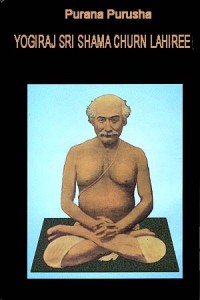
>> UNESCO PUBLISHING, PURANAS & YOGA <<
Ancient Indian Tradition and Mythology
>> The Yoga Tradition: PURANAS & YOGA <<
Its History, Literature, Philosophy and Practice ( >> von Georg Feuerstein << )
Wie bereits schon in einem vorigen Beitrag über die > Puranas < abgehandelt, – enthalten die Puranas also Berichte über und Verweise auf eine ganze Reihe von yogischen Schulen.( siehe auch zB in der Siva Purana: Mantra Yoga, Maha Yoga, Bhava Yoga, Sparsha Yoga, Abhava Yoga, ) .
Manche dieser Schulen folgen mehr oder weniger strikt Patanjalis Konzept des achtgliedrigen Pfades, wenn sie auch die acht Glieder gelegentlich anders interpretieren als jene grosse Yoga-Autorität.
Was sie aber ganz eindeutig von Patanjalis Tradtion unterscheidet, ist ihre Betonung eines einzigen höchsten Prinzips – des Selbst oder Gottes.
Zwar gibt es bis heute nur wenige Forschungsarbeiten zum puranischen Yoga, doch stehen alle größeren Puranas in einigermaßen verlässlichen englischen Übersetzung zur Verfügung; weitere Texte dieser literarischen Gattung werden im Rahmen der „Indischen Übersetzungs-Reihen“, gesponsert von der indischen Regierung und UNESCO, fortlaufend ins Englische übertragen. Nach Abschluss des Unternehmens wird die „Ancient Indian Tradition & Mythology Series “ , übersetzt von einer Gruppe von Gelehrten und veröffentlicht bei > Motilal Banarsidass (MLBD) <, Dehli, einhundert Bände umfassen.
Der in diesen Schriften aufbewahrte Schatz von Mythen und Legenden vermag den Yoga-Studenten für lange Zeit zu inspirieren…..
> Meet Feuerstein´s Traditional Yoga Studies Group at facebook <
P U R A N A S
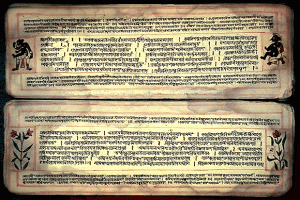
> Hinduism: A Holistic Way of Life <
The Hindu Vedas & Puranas elucidate on not only theology and mytho
Yoga is a way of life, an art of righteous living or an integrated system for the benefit of the body, mind and inner spirit. This art originated, was perfected and practiced in India thousands of years ago.
The references to yoga are available in > ‚Upanishads‘ < and > ‚Puranas‘ < composed by Indian Aryans in the later Vedic and post- Vedic period.
The main credit for systematizing yoga goes to Patanjali who wrote ‚Yoga Sutra‘, two thousand Years ago.
He described the principles of the full eight fold yogic discipline. He composed the treatise in brief code words known as ‚Sutras‘.
Yoga is a way of life, an art of righteous living or an integrated system for the benefit of the body, mind and inner spirit. This art originated, was perfected and practiced in India thousands of years ago. The references to yoga are available in ‚Upanishads‘ and ‚Puranas‘ composed by Indian Aryans in the later Vedic and post- Vedic period.
The main credit for systematizing yoga goes to Patanjali who wrote ‚Yoga Sutra‘, two thousand Years ago. He described the principles of the full eight fold yogic discipline. He composed the treatise in brief code words known as ‚Sutras‘. > ‚Yoga Sutra‘ < is the most important basic text on Yoga. It is through this basic treatise that the essential message of yoga spread throughout the world.
Aim of Yoga is the attainment of the physical, mental and spiritual health. Patanjali has recommended eight stages of Yoga discipline. They are:
-
Yamas- Yamas (abstentions or restrains)
-
Niyamas- Niyamas (observances)-austerities, purity, contentment, study, surrender of the ego
-
Asanas- Physical postures or exercises
-
Pranayama- Control of vital energy (Breathing control)
-
Partyahara- Withdrawal of the senses
-
Dharana- Concentration of the mind (Contemplation)
-
Dhyana- Meditation
-
Samadhi- Attainment of The super conscious state
Quelle Astrojyothi: > The Puranas < are the richest collection of mythology in the world. Most of them attained their final form around 500 A.D. but they were passed on as an oral tradition since the time of Krishna (c. 1500 B.C.).
There are eighteen major Puranas and a few minor ones. Each is a long book consisting of various stories of the Gods and Goddesses, hymns, an outline of ancient history, cosmology, rules of life, rituals, instructions on spiritual knowledge. Hence the Puranas are like encyclopedias of religion and culture and contain material of different levels and degrees of difficulty.
The most important Puranas are the VISHNU PURANA, SHIVA PURANA and MARKENDEYA PURANA (to the Goddess). The BHAGAVATA PURANA is important to the worshippers of Krishna. Other Puranas are the Vayu, Agni, Skanda, Kalki, Linga.
„The Vedas and Puranas are one and the same in purpose. They ascertain the Absolute Truth, which is greater than everything else. The Absolute Truth is ultimately realized as the Absolute Personality of Godhead with absolute controlling power. As such, the Absolute Personality of Godhead must be completely full of opulence, strength, fame, beauty, knowledge and renunciation.“
The Puranas are perhaps the most important or commonly used scriptural texts of the Hindus. They were guide books for the whole of life and society.
- Dein Ayurveda Net: ….. > “ Patanjali „ <
- Dein Ayurveda Net: ….. > “ Ashtanga “ <
- Dein Ayurveda Net: ….. > “ Purana “ <
- Dein Ayurveda Net: ….. > “ Agama“ <
- > Meet Patanjali Groups at facebook <
- > Meet Upanishad Groups and Study at facebook <
BHAGAVAD GITA
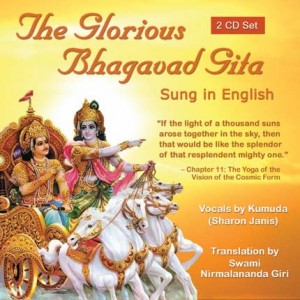
> BHAGAVAD GITA im Yogi Shop <
The Bhagavad Gita is technically part of Book 6 of the Mahabharata, although it is known to be a later accretion to the saga, which stands on its own merits. It is a dialog between the God Krishna and the hero Arjuna, taking place in a timeless moment on the battlefield before the climactic struggle between good and evil. The Gita (which can be found in hotel bedstands throughout India) is a classic summary of the core beliefs of Hinduism. It has had a significant influence far beyond Hinduism. Robert Oppenheimer apocryphically recited the verse (from Chapter 11) ‚I [have become] Death, Destroyer of Worlds“, just before the first test of the atom bomb, which ironically has a much different meaning in context. Quelle: Sacred Text: > here <
Introduction to the Gita
The BHAGAVAD-GITA is contained in Book 6 of the great Hindu epic, MAHABHARATA, probably the longest poem in all of literature. The GITA was written between the fifth century BC and the second century CE and is attributed to Vyasa. According to Aurobindo, who studied Vyasa’s writings, nothing disproves his authorship.
The > MAHABHARATA < tells the story of a civil war in ancient India between the sons of Kuru (Kauruvas) and the sons of Pandu (Pandavas) over a kingdom the Pandavas believe was stolen from them by the cheating of the Kauruvas. Every attempt by the Pandava brothers to regain their kingdom without war has failed.
The BHAGAVAD-GITA is primarily a dialog between Arjuna, the third Pandava brother, and his charioteer, Krishna. Remaining neutral, Krishna allowed one side to use his vassals in battle, while the other side could have him as a charioteer although he would not fight himself. The old blind King Dhritarashtra declined a great sage’s offer to give him sight for the battle, because he did not want to see the bloodshed. Instead the great sage gave Sanjaya the ability to perceive at a distance everything that was going on, and he describes the events for the King.
In the GITA Krishna, who is the uncle and friend of the Pandavas, gives Arjuna teachings on yoga, which means union and implies union with God. Krishna is considered by Hindus to be an incarnation of the god Vishnu, the preserver.
In the first chapter of the GITA, some of the heroes of the two armies are mentioned by King Duryodhana, the oldest Kaurava brother, first the Pandavas: the son of Drupada, Bhima, Arjuna, Yuyudhana, Virata, Drupada, Dhrishtaketu, Chekitana, the King of Kashi, Purujit, Kuntibhoja, Shaibya, Yudhamanyu, Uttamauja, the son of Subhadra, and the sons of Draupadi; then the Kauravas: Bhishma, Karna, Kripa, Ashvatthaman, Vikarna, Saumadatti, and Drona. When they blow their conch-horns, Arjuna’s brothers are named: Bhima, Yudhishthira, Nakula, and Sahadeva.
Throughout the text various epithets or nicknames are used for Krishna and Arjuna. Krishna is called: Madhava (descendant of Madhu), Hrishikesha (bristling-haired), Keshava (handsome-haired), Govinda (chief of herdsmen), slayer of Madhu (a demon), Janardana (agitator of humans), Varshneya (clansman of the Vrishnis), Vasudeva (son of Vasudeva), Hari, and slayer of Keshin (a demon). Arjuna is called: son of Pandu, Gudakesha (thick-haired), Partha (son of Pritha, Kunti’s original name), Kaunteya (son of Kunti), Bharata (ancient name of India, used for other characters as well), Bharata bull, wealth winner, foe scorcher, great-armed one, blameless one, tiger spirit, and Kuru’s joy or best of Kurus (Kuru being a common ancestor of both the Pandavas and the Kauravas). Gandiva is the name of Arjuna’s bow.
> Meet Bhagavad Gita Groups at facebook <
> Meet Mahabharata Groups at facebook <
PURE BHAKTI TV , BHAKTI YOGA

> A. C. Bhaktivedanta Swami Prabhupada <
Bhakti (DevanÄ�garÄ�: भक्ति, Sanskrit: devotion, or portion) in practice signifies an active involvement by the devotee in divine worship. The term is often translated as „devotion“, though increasingly „participation“ is being used as a more accurate rendering, since it conveys a fully engaged relationship with God. One who practices bhakti is called a bhakta, while bhakti as a spiritual path is referred to as bhakti marga, or the bhakti way. Bhakti is an important component of many branches of Hinduism, defined differently by various tradtions and schools.
Bhakti emphasises devotion and practice above ritual. Bhakti is typically represented in terms of human relationships, most often as beloved-lover, friend-friend, parent-child, and master-servant. It may refer to devotion to a spiritual teacher (Guru) as guru-bhakti, to a personal form of God,or to divinity without form (nirguna). Different traditions of bhakti in Hinduism are sometimes distinguished, including: Shaivas, who worship Shiva and the gods and goddesses associated with him; Vaishnavas, who worship forms of Vishnu, his avataras, and others associated with; Shaktas, who worship a variety of goddesses. Belonging to a particular tradition is not exclusive—devotion to one deity does not preclude worship of another.
The Bhagavad Gita is the first text to explicitly use the word „bhakti“ to designate a religious path,which the Bhagavata Purana develops more elaborately. The so-called Bhakti Movement saw a rapid growth of bhakti beginning in Southern India with the Vaisnava Alvars (6th-9th century CE) and Saiva Nayanars (5th-10th century CE), who spread bhakti poetry and devotion throughout India by the 12th-18th century CE. Bhakti influence in India spread to other religions, coloring many aspects of Hindu culture to this day, from religious to secular, and becoming an integral part of Indian society.
Bhakti Yoga
The Bhagavad Gita introduces bhakti yoga in combination with karma yoga and jnana yoga, while the Bhagavata Purana expands on bhakti yoga, offering nine specific activities for the bhakti yogi.Bhakti in the Bhagavad Gita offered an alternative to two dominant practices of religion at the time: the isolation of the sannyasin and the practice of religious ritual.Bhakti Yoga is described by > Swami Vivekananda < as „the path of systematized devotion for the attainment of union with the Absolute“. In the twelfth chapter of the Gita Krishna describes bhakti yoga as a path to the highest spiritual attainments. In the ninth chapter, he says,
Fill thy mind with Me, be My devotee, sacrifice unto Me, bow down to Me; thus having made thy heart steadfast in Me, taking Me as the Supreme Goal, thou shalt come to Me. (B-Gita 9.34)
Shandilya and Narada produced two important Bhakti texts, the Shandilya Bhakti Sutra and Narada Bhakti Sutra. They define devotion, emphasize its importance and superiority, and classify its forms.
> Meet Centro Studi Bhaktivedanta at facebook <
> Meet Srila Prabubhada at facebook <
> Meet ISKCON Friends at facebook <
> Meet Swami Vivekananda Groups at facebook <
Tibetan Medicine, Spirituality, Compassion
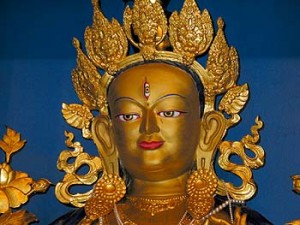
> CONGRESS – 10th anniversary of the New Yuthok Institute <
October 31 2009 (9h – 18h)
„Spirituality & compassion as cure of the body and mind“
Das > New Yuthok Institut < feiert dieses Jahr sein 10-jähriges Jubiläum. Aus diesem Anlass wird am 31. Oktober 09 ein Kongress in Mailand organisiert. Über ihre Erfahrungen mit Tibetischer Medizin im Westen berichten:
- Tibetische Medizin und Homöopathie, Dr. Victorine Cumero
- Beziehung zwischen Buddhismus und Tibetischer Medizin, Prof. Pasang Yonten Arya Tendi Sherpa
- Tibetische und Westliche Medizin, Dr. Med Walburg Maric’ Oehler
- Produkte der Tibetischen Medizin, Dr. Herbert Schwabl
- Tibetische Medizin und Onkologie, Dr. Alfredo Celano
- Mitgefühl und Tibetische Medizin als psychologische Therapie, Prof. Gioacchino Pagliaro
- Tibetische Medizin und alltägliche Probleme aus der Praxis, Dr. Simonetta Nicolai
- Präsentation ausgewählter Fälle, Dr. Tenzin Thupten
The New Yuthok Institute is an Association founded by Prof. Yonten Arya (T. Sherpa) with several medical doctors and psychologists to preserve and spread the age-old teachings of Tibetan Medicine.
This particular medical system is distinguished from all other Eastern Medicines because of its strong spiritual and psychological matrix linked to the connection initially created with Bon shamanism and, later and especially, because of its strong link to Tibetan Buddhism.
It is a well-known fact that Buddhism is at the center of Tibetan Medicine which began with the teachings of Buddha Shakyamuni, himself, and it is just this close and essential relationship with Buddhism which sets the Tibetan system apart from all others.
Tibetan Medicine, in addition to its high ethical values, gives us a detailed description of the mind, the mental states and how they function. Today, much of this large body of information has been scientifically validated by neuroscience. The Tibetan view takes not only the individual and biological aspects of the mind into account but also its energetic and spiritual dimension. It is this dimension which dictates how we view all things and how they take shape in our minds.
It is especially, though not only, for this reason that Tibetan Medicine has awakened great interest among the community of psychologists, psychiatrists and mental health workers.
Tibetan Medicine is also unique because it doesn’t isolate itself from medical-scientific views and, in fact, embraces and complements them to offer an extraordinary contribution not only because of the therapeutic results it achieves but also because of its ability to integrate with scientific medicine and with other complementary medicines.
Tibetan Medicine, today, provides the West with an extraordinary opportunity because TM can act as a bridge to unite the various scientific, medical and psychological disciplines and can provide a path to achieve the ‘humanization’ of medical care.
With this Congress, the New Yuthok Institute celebrates its tenth anniversary by presenting aspects of the important training it has provided to many psychologists, medical doctors, nurses, physiotherapists, naturopaths and health workers in general and the results it has achieved in the context of clinical applications.
> Geschichte der Tibetischen Medizin <
und die Modernen Aspekte der Tibetischen Medizin
Die Tibetische Medizin hat ihre Hauptwurzeln im Lande selbst und in der uralten Erfahrung und Geschicklichkeit des tibetischen Volkes, das seit jeher in enger Verbindung zur Natur gelebt hat und zu seinem Überleben in großer Höhe stets auf eigene Ressourcen angewiesen war. Im Laufe der letzten zweitausend Jahre hat aber auch die medizinische Weisheit anderer Länder und Zivilisationen Eingang in das einheimische System gefunden – entweder wurden neue Einsichten direkt und beabsichtigt übernommen oder durch natürliche gegenseitige Befruchtung der Kulturen über Jahrhunderte hinweg allmählich assimiliert. Nachfolgend einige wichtige Stationen
Seit Jahrtausenden entwickelt sich in Tibet eine medizinische Überlieferung, die als Bön-Tradition bekannt ist.
> TIBETAN TANTRIC YOGA AND LUEJONG <
Two day seminar
rLung, mind and physical Yoga (luejong)
Concepts and practice, level II
Prof. Pasang Y. Arya
November 07-08 2009
The Tibetan tantric yoga is a practice that has been done by Indian and Tibetan yogis for centuries, and is not like yoga usually practiced in the West. It is a practice of rLung (psychic wind) and exercise of the mind purely based on spiritual development, which was laid down by the tantric tradition of master Pundit Naropa and later masters. The exercice removes the negative energies from the channels and chakras by physical positions and movements which harmonize wind and mind and release inner stress and tension. Dedicated and genuine pratitioners may tame the wind, develop spiritual experience, and become able to control the mind and emotion. The life-long exercice with proper motivation and correct view can lead to the pure state of awakened Buddhahood. Generally the yoga technique basically helps stimulate the channels and chakras, and purifies the body/mind and promote the health.
Our main site will help you find the Palyul center closest to you and will introduce you to our teachers, their teachings, and teaching schedules.
Our mission is to uphold and preserve the teachings of the Buddha through study, practice and activity. Our goal is to make the teachings, particularly in the Palyul Nyingma tradition of Tibetan Buddhism, available to all.
> Yoga <
Our centers offer a complete course of study, prayer, and meditation practice for those who wish to follow the path to freedom. Our retreat centers offer places to focus on practice. Click for a guide to Palyul center locations around the world or select a center website from the menu at left.
> Meet Tibetan Medicine at facebook <
> Meet IASBS Communication Board Buddhist Studies at facebook <
> Meet Palyul Dhonyag Shedrub Ling at facebook <
PATANJALI – DIE WURZELN DES YOGA
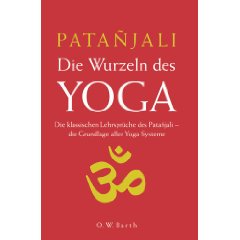
Die klassischen Lehrsprüche des Patanjali
von Bettina Bäumer
> YOGA & AYURVEDA von Vinod Verma <
Patanjalis Yoga-Sutras und ihre Anwendung auf Ayurveda
Patanjali (Sanskrit, पतञ्जलि, Patañjali, [pʌtʌɲʤʌlɪ]) war ein indischer Gelehrter, der die heute noch vollständig überlieferten Yoga-Sutras verfasst haben soll. In der indischen Mytholgie gilt er als Inkarnation des Schlangenkönigs Shesha. Über das Leben von Patañjali ist jedoch nichts bekannt, auch nicht wann er gelebt hat. Es ist nicht einmal sicher, ob er eine historische Persönlichkeit war. Indische Tradition setzt ihn mit dem Grammatiker gleichen Namens, der im 2. Jahrhundert vor Christus lebte, gleich. Da der Wortschatz des Grammatikers und des Schreibers jedoch stark von einander abweichen, gehen Indologen davon aus, dass es sich nicht um die gleiche Person handelt. Vielmehr sind sie aufgrund bestimmter Formulierungen, die sich auch im Spätbuddhismus finden, der Ansicht, das Werk sei im 4. oder 5. Jahrhundert nach Christus entstanden.
Wörtlich übersetzt bedeutet Sutra „Faden“. Das Yoga-Sutra ist also gewissermaßen ein Leitfaden für Yoga, der anders als die Bhagavadgita keine Rahmenhandlung besitzt und auch nicht gesungen wurde. Das Yoga-Sutra von Patañjali besteht aus 195 Sanskrit-Versen, in denen in hochkonzentrierter Form die Essenz des Yoga-Weges gebündelt ist. Es ist eine der ältesten Überlieferungen der Yoga-Tradition. Diese Form des Yoga wird als Raja Yoga oder Ashtanga Yoga (achtgliedriger Yoga) bezeichnet.
Kurzbeschreibung
Diese klassischen Lehrsprüche bilden die geistige Grundlage aller Yogasysteme. Sie stammen aus Überlieferungen, die wahrscheinlich im 2. Jahrhundert v. Chr. von Patañjali aufgezeichnet wurden. Die Vielfalt der Schulen und Richtungen, die sich im Laufe der Jahrhunderte entwickelt haben, geht auf diese älteste Quelle zurück. Die 195 prägnanten Sentenzen weisen den »königlichen Weg« zur vollkommenen inneren Befreiung durch rechte Erkenntnis. Er führt schrittweise , ohne Askese und gewaltsame Unterdrückung der Denkvorgänge, zum Verständnis der Wirklichkeit. Im Yoga leben heißt, unmittelbar, von Augenblick zu Augenblick, ohne hemmende Bindung an die Vergangenheit, ohne eingeschliffene Gewohnheiten oder eine überkommene Weltanschauung leben. P.Y. Deshpande, ein bekannter Schriftsteller und Publizist, hat sich über vierzig Jahre lang in Theorie und Praxis mit Yoga beschäftigt. Seine Einsichten, die Früchte dieser langjährigen Erfahrung, bilden zusammen mit den von Bettina Bäumer aus dem Sanskrit übertragenen Sutren ein unentbehrliches Standardwerk auf dem Gebiet des Yoga.
ADVAITA ON ZEN AND TAO
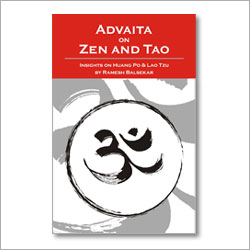
> Advaita On Zen And Tao – Book <
Insights On Huang Po And Lao Tzu
We are at a unique moment in the evolution of spirituality. For centuries, sages of various traditions around the world have been expressing the Truth of non-duality; and their disciples have been faithfully preserving the teachings and passing them on. But it is only now, in this era of advances in mass communication, that it has become possible for a living sage of one tradition, to produce commentaries inspired by the mystical traditions of another.
Imagine if > Chuang Tzu < had written a commentary on the > ‘Bhagavad Gita’ < , or if the sage Jnaneshwar had produced reflections on the > ‘Heart Sutra’ < ! Within these pages a similar dream has been realised – commentaries on the teachings of the revered > Zen Master Huang Po <, and a modern ‘Book of the Way’ inspired by Lao Tzu’s ‘Tao Te Ching’, both written by Advaita Master Ramesh S. Balsekar.
The repetition of tradition cannot be termed as wrong, but when the teaching is embodied the teacher is at liberty to put it in his own words instead – because he is It.
Ramesh’s words bridge the apparent gap of centuries and geographical boundaries, revealing the hidden Truth behind the illusion of time and space: Advaita, Zen, and Tao.
Ramesh Balsekar, author of over 20 books, discusses the Indian philosophy of Advaita daily at his residence in Mumbai, with visitors from around the world. The basic concept is that “all there is, is Consciousness;” all actions are happenings, the functioning of the Primal Energy, and not the doing by anyone. He has a unique focus on what we all have to deal with in our daily living. His teaching has impacted the lives of many people.